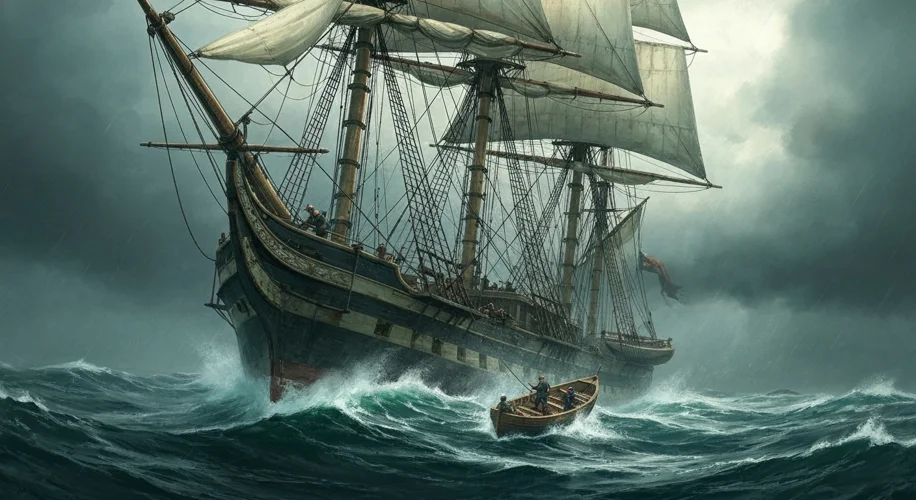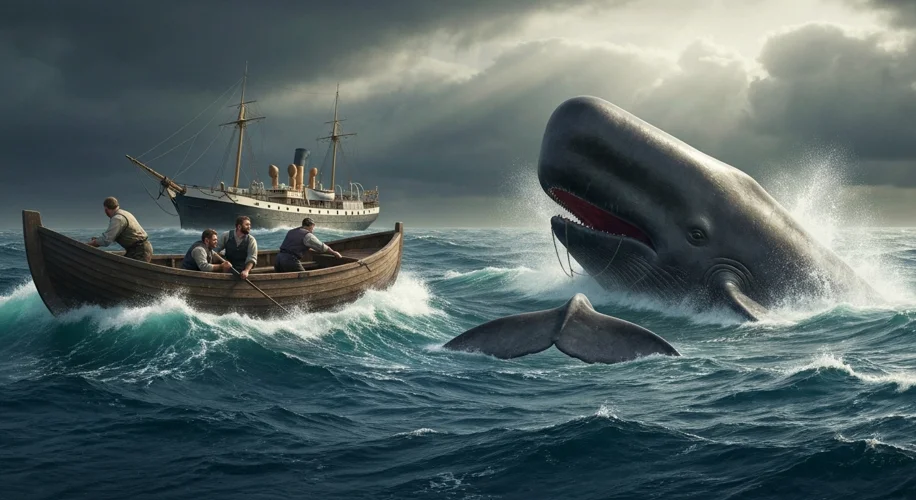The salty spray stung their faces, the wind howled like a banshee, and the vast, indifferent ocean stretched to the horizon. This was the world of the whaler, a life of unimaginable hardship, raw courage, and constant peril. For centuries, men from all walks of life, driven by necessity, adventure, or the lure of profit, signed aboard vessels that hunted the ocean’s largest inhabitants – whales.
Imagine a world before the roar of engines, before sonar, before sophisticated navigation. The whale hunt was a battle waged with muscle, wit, and sheer determination. The vessels themselves were formidable, but often cramped and unforgiving. Ships like the barkentine or the full-rigged ship were built for long voyages, carrying not only their crew but also the heavy equipment needed for the hunt and the processing of the whale. These were not luxury liners; they were floating factories, designed for endurance rather than comfort.

The process of whaling was a testament to human bravery and ingenuity. The hunt began with the lookout, perched high in the crow’s nest, scanning the seemingly endless expanse of water for the tell-tale spout of a surfacing whale. Once sighted, a whaleboat, a smaller, more maneuverable craft, would be launched, manned by a crew of six to eight men, including the harpooner and the boat steerer. These men rowed with all their might, often for hours, to close the distance with their massive prey.
The critical moment arrived with the harpooner. Armed with a heavy, barbed iron, he would stand precariously in the bow of the pitching boat, waiting for the perfect opportunity. With a mighty heave, he would launch the harpoon, aiming to strike deep into the whale’s blubber. A successful strike meant the whale would dive, dragging the boat behind it at incredible speeds – a phenomenon known as ‘making fast’ or ‘cutting in.’ This could last for hours, testing the endurance of the crew and the strength of their ropes, as the whale’s powerful tail could easily capsize the boat.
Once the whale was exhausted or killed, the real work began. The massive carcass was towed back to the mother ship, where it was ‘flensed’ – its blubber stripped away in huge sections. This blubber was then rendered down into oil in large try-pots on deck, a process that filled the air with a thick, acrid smoke and an unforgettable stench. The oil, a valuable commodity used for lamps, soap, and lubricants, was the primary reason for these perilous voyages. The whale’s baleen, or ‘whalebone,’ was also highly prized for corsets, umbrellas, and other flexible items.
Long voyages meant months, sometimes years, away from home. The isolation was profound. For months on end, the only faces they saw were those of their shipmates. The psychological toll was immense: the constant danger, the grueling work, the monotony, and the gnawing fear of the unknown could weigh heavily on a sailor’s mind. Scurvy, a disease caused by vitamin C deficiency, was a constant threat, as were storms, fires, and the ever-present risk of being crushed by a whale.
Famous expeditions, like the voyages of the Pequod in Herman Melville’s classic novel, though fictional, captured the romanticized yet brutal reality of whaling. Historical voyages by ships like the Wanderer or the Charles W. Morgan undertaken by men like the legendary Captain George Pollard Jr. or the intrepid Owen Chase, tell tales of resilience, loss, and unwavering dedication. These men faced not only the immense power of nature and the colossal might of the whale but also the internal conflicts and the stark realities of a life lived on the edge.
The impact of whaling on global economies and societies was significant. It fueled industrial development, provided essential commodities, and shaped the course of maritime exploration. However, it also brought many whale species to the brink of extinction, a stark reminder of humanity’s impact on the natural world. The era of commercial whaling, though largely diminished today, represents a profound chapter in human history, one that speaks of daring exploits, the relentless pursuit of sustenance, and the enduring spirit of those who dared to venture into the deep.

